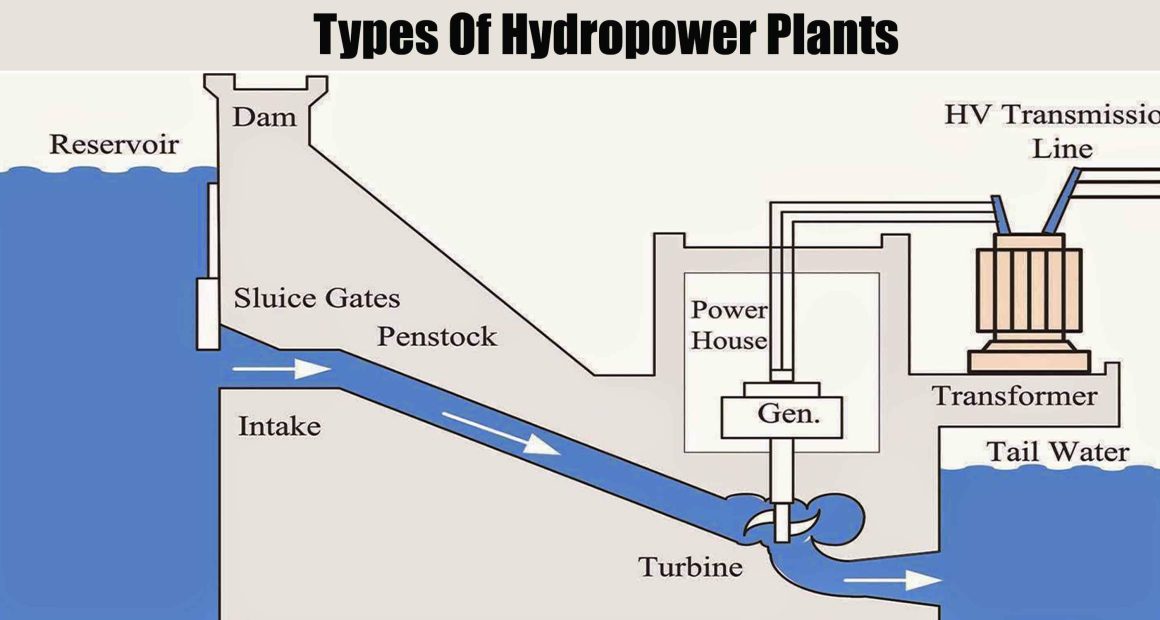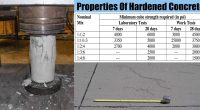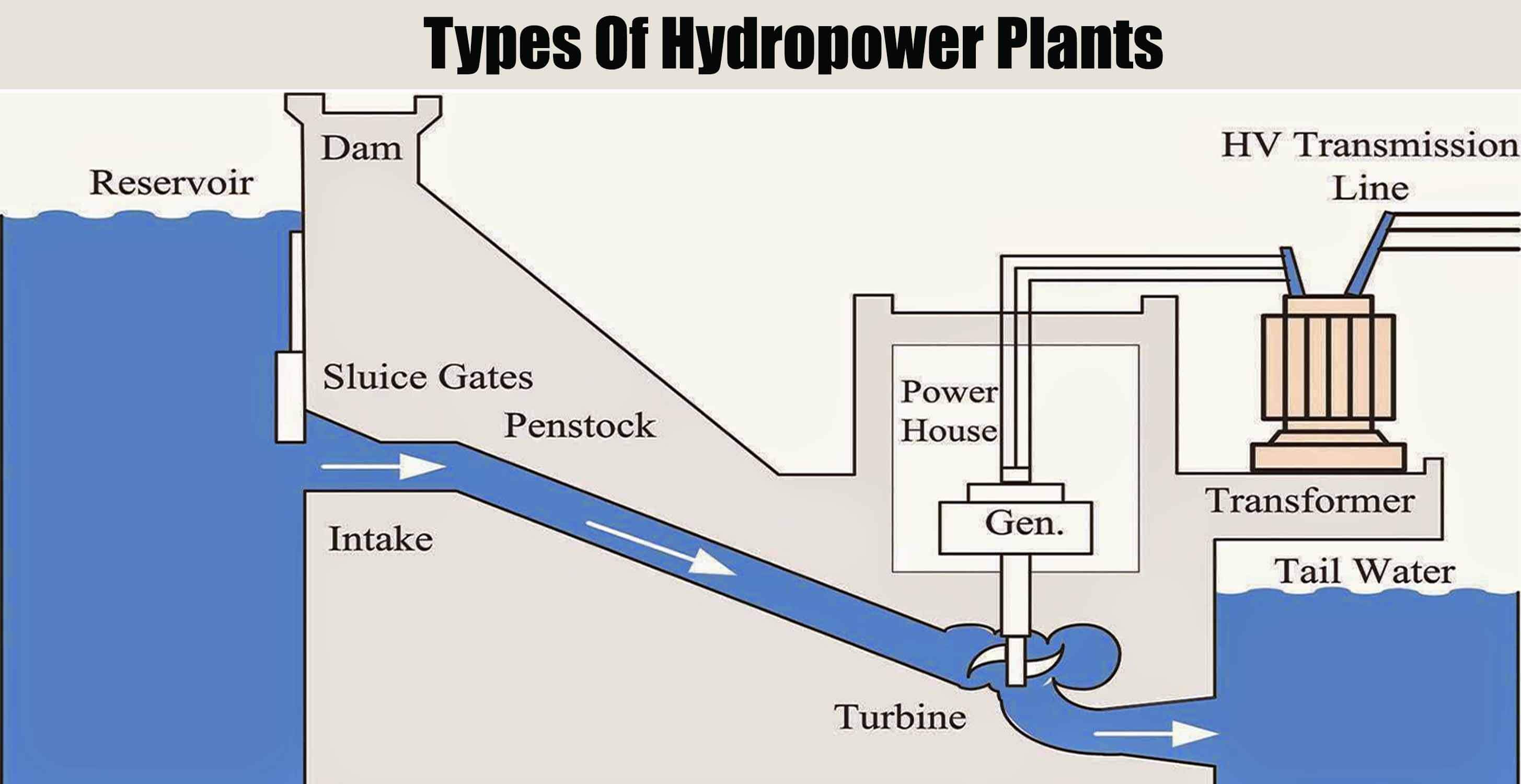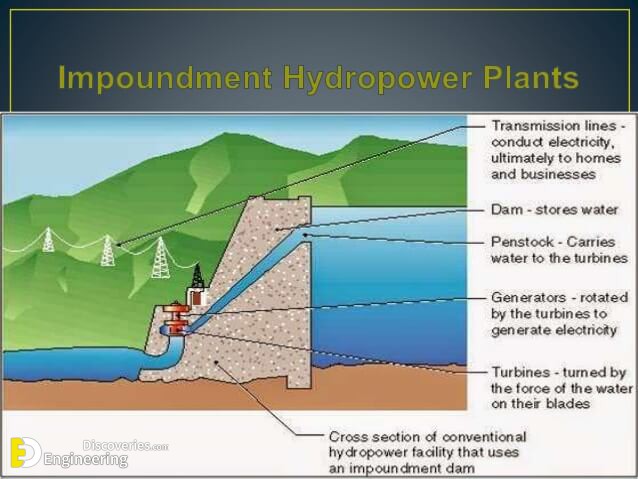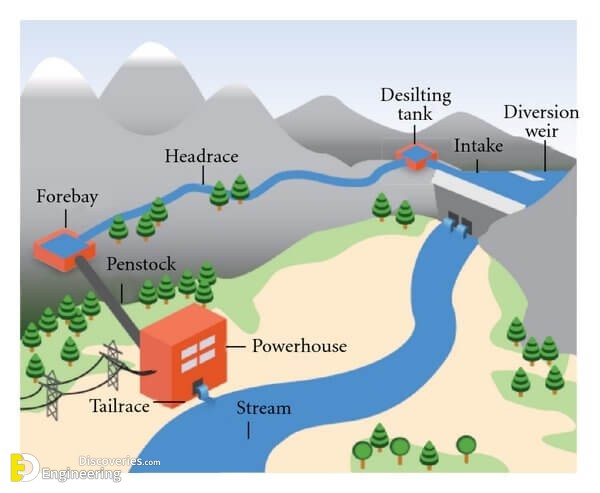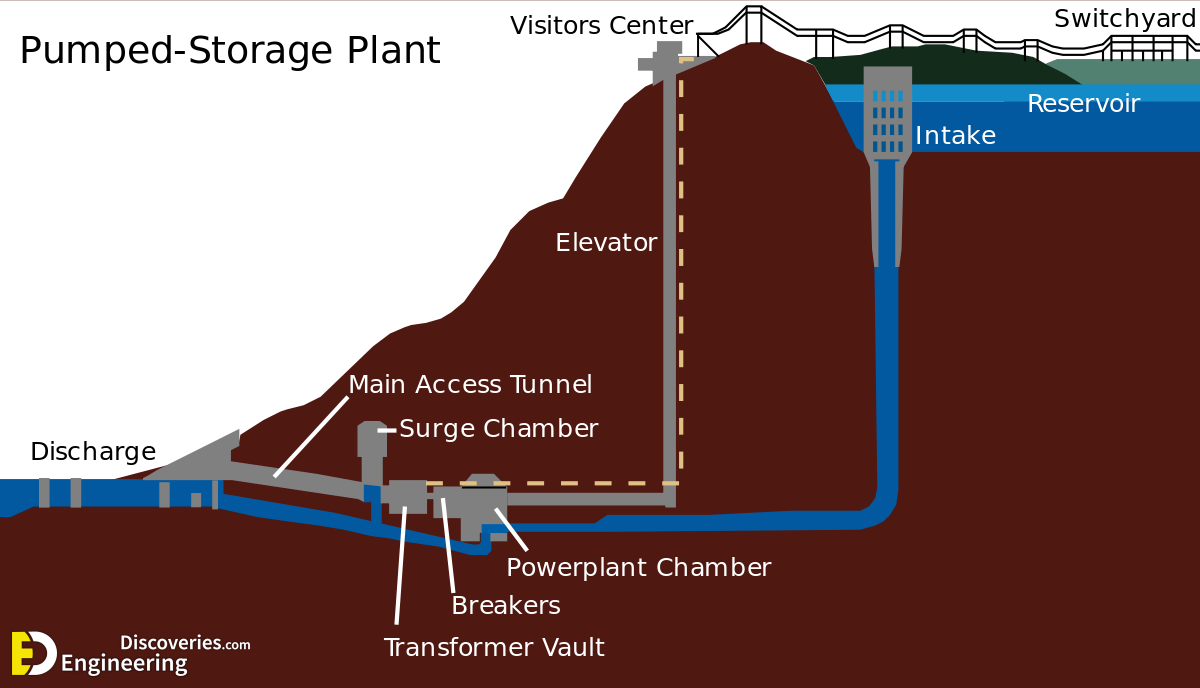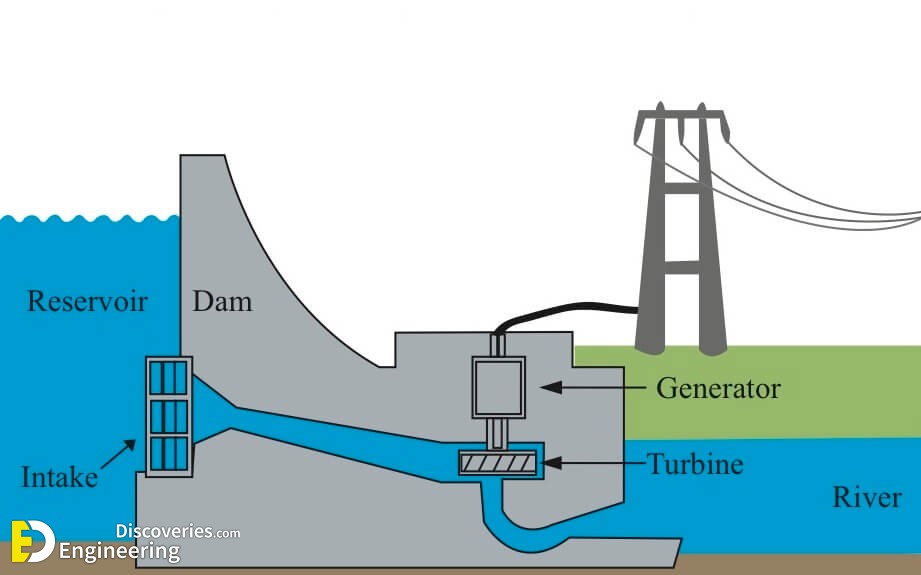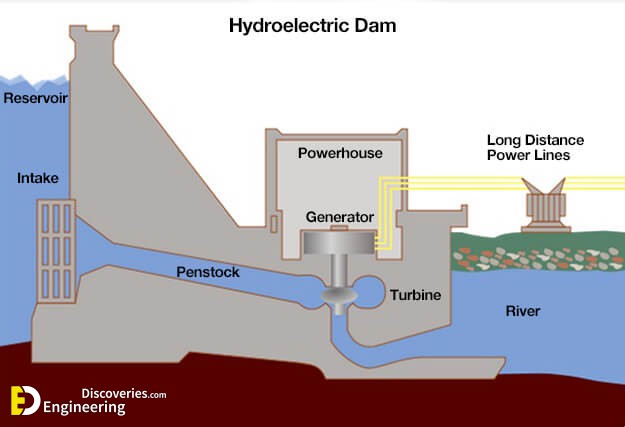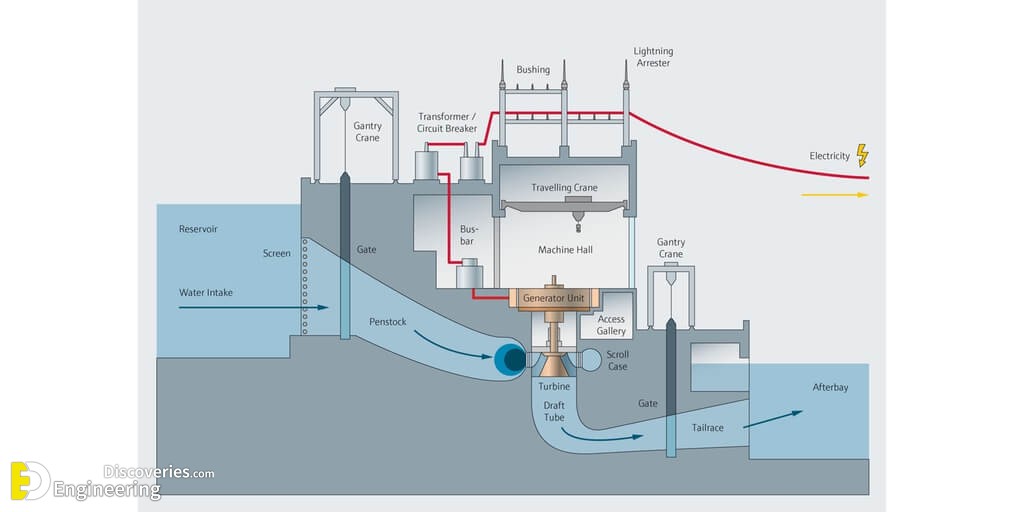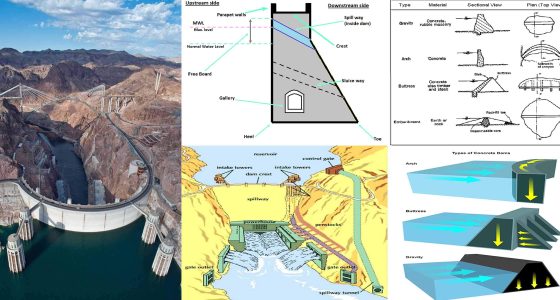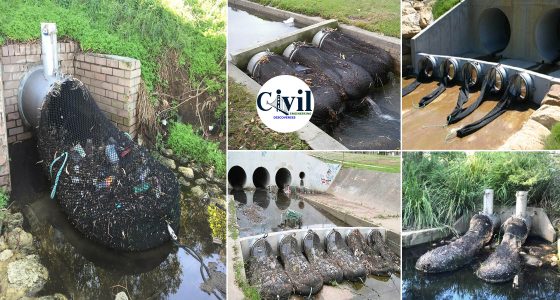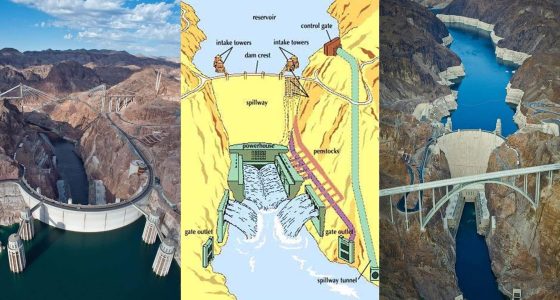There are three types of hydropower facilities: impoundment, diversion, and pumped storage. Some hydropower plants use dams and some do not. Many dams were built for other purposes and hydropower was added later. In the United States, there are about 80,000 dams of which only 2,400 produce power. The other dams are for recreation, stock/farm ponds, flood control, water supply, and irrigation.
Hydropower plants range in size from small systems for a home or village to large projects producing electricity for utilities. The sizes of hydropower plants are described below.
Impoundment
The most common type of hydroelectric power plant is an impoundment facility. An impoundment facility, typically a large hydropower system, uses a dam to store river water in a reservoir. Water released from the reservoir flows through a turbine, spinning it, which in turn activates a generator to produce electricity. The water may be released either to meet changing electricity needs or to maintain a constant reservoir level.
Diversion
A diversion, sometimes called run-of-river, facility channels a portion of a river through a canal or penstock. It may not require the use of a dam.
Pumped storage
Another type of hydropower called pumped storage works like a battery, storing the electricity generated by other power sources like solar, wind, and nuclear for later use. It stores energy by pumping water uphill to a reservoir at a higher elevation from a second reservoir at a lower elevation. When the demand for electricity is low, a pumped storage facility stores energy by pumping water from a lower reservoir to an upper reservoir. During periods of high electrical demand, the water is released back to the lower reservoir and turns a turbine, generating electricity.
Sizes of hydroelectric power plants
Facilities range in size from large power plants that supply many consumers with electricity to small and micro plants that individuals operate for their own energy needs or to sell power to utilities.
Large Hydropower
Although definitions vary, DOE defines large hydropower as facilities that have a capacity of more than 30 megawatts (MW).
Small Hydropower
Although definitions vary, DOE defines small hydropower as projects that generate 10 MW or less of power.
Micro Hydropower
A micro hydropower plant has a capacity of up to 100 kilowatts. A small or micro-hydroelectric power system can produce enough electricity for a home, farm, ranch, or village.
For more information watch this video
